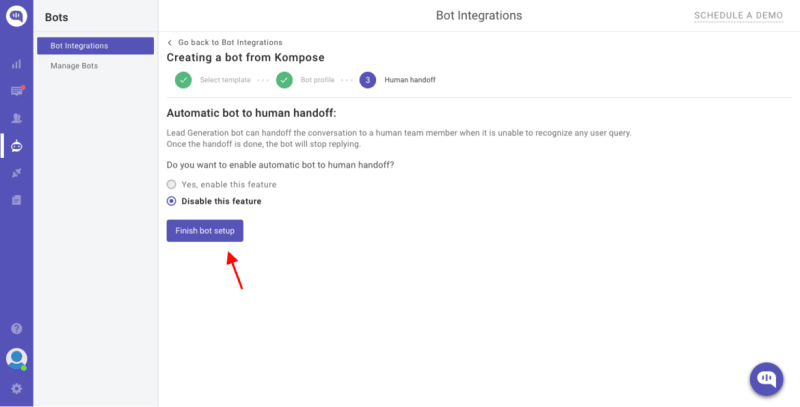
OpenAI’s ChatGPT changed the AI game. A Large language model that was capable of writing code, blog posts, short stories and essays, and even poems. People screamed from the rooftops that ChatGPT was going to take their jobs away. There was a lot of noise, and with good reason.
ChatGPT is one of the most powerful tools to come into the computing world in recent times. Some of the biggest names in the market, like Meta, Salesforce, Koo and Duolingo are already using ChatGPT in one form or another.
ChatGPT for enterprises means OpenAI has made the game even more interesting, with enterprise level capabilities that will solve a lot of customer’s problems. But are we just “scraping the surface with this technology?”
Looking back at Website scraping
Website scraping is not new. The technology has been around since 1993, when Matthew Gray at MIT built the Wanderer. The Wanderer was based on Perl, and the primary use case was measuring the size of the web. Closely following suit were tools like Jumpstation and then, a decade later, Beautiful Soup.
Beautiful Soup was an HTML parser that used Python to parse the contents within the HTML containers. It saved the programmers hours of work, but it was also not the most efficient scraper out there.
With the progress of time, there were visual web scrapers that allowed users to highlight important sections of the web and structure that into useful excel files.
All that changes with OpenAI’s ChatGPT that can help make website scraping a breeze.
How does Website scraper work? The underlying technology
Imagine a customer comes to your website, say kommunicate
At the backend, we scrape the content of the HTML documents present inside the URL using Python. Once the scraping of the content inside the URL is done, this text is then broken into chunks.
The next step is to make embeddings for the extracted text. If you are new to NLP, embeddings represent text as a dense vector of numbers to capture the meaning of words. They are used in search, clustering, anomaly detection and classification.
In the final step, there is a response for the question from the user, behind which there is an LLM such as ChatGPT.
All this works under the hood, and the user just has to enter the URL of the website that he would like to convert into a chatbot.
Kommunicate’s website scraper – Chat with any website in minutes!!
Watch the video tutorial here:
By now, you know a bit about scraping a website, how the technology grew, and what lies under the hood of a website scraper powered by an LLM.
Let us now see how to use this information to chat with any website, using Kommunicate’s Kompose bot builder.
Step 1: Go to the Bot Integrations section
Login to your Kommunicate dashboard. If you haven’t signed up yet, you can sign up for free here.
Once you are in the dashboard, navigate to the Bot Integrations section.
After this, navigate to “Create a bot from Kompose” and select the Blank template.

Step 2: Set up bot name and language
In the ‘Bot profile’ page, set up your Bot by providing Bot Name & Language, then click ‘Save and proceed”.

Once saved, it will navigate to the next page ‘Human handoff’. Enable or disable the “Automatic bot to human handoff” setting, and click the ‘Finish bot setup’ button.

Step 3: Create a welcome message for your chatbot
After creating your first bot, you’ll be transferred to Kommunicate Flow Designer. By default, we’ve already prepared a basic conversation tree there to help you get going.
Click on the Bot response block to open its edit window. You can create it the way you want.
Step 4: Convert your website into a chatbot
Now comes the fun part, where we actually convert our website into a chatbot. Click on Website Scraper and input the URL you want to convert into a chatbot.
Finally, click on “Add” and then Boom, the scraper actually has now converted your entire website into a chatbot.
Step 5: Test your chatbot
The final step is to test your chatbot. Click on the “Test Chatbot” button on the right hand side. “Test Alex” in this case.
Ask Alex any question you might have on the website. Congratulations, you have just converted your entire website into a chatbot.
Advantages and Applications of Web Chatbot trainer
The applications of website scraper include:
Data collection: LLMs can scrape the data from your website and present it really quickly to the target audience. This data can be in the form of product information, pricing data and customer reviews.
Sentiment analysis: LLMs can gauge the sentiments of the text present on the websites. For example, if there are a lot of negative customer reviews, the LLM can identify their specific pain points and suggest methods to address them.
PDF Scanner
LLMs can also help you in topic generation and text modelling.
The technology that is in the works has some far reaching applications.
Some of them include:
Speed: In any business, time is money, and LLMs like ChatGPT can scrape a website faster than ever before.
Accuracy: LLMs like ChatGPT are trained on massive datasets of code and text, allowing them to collect information faster than ever from websites.
Cost-effectiveness: Website scraping using LLMs are some of the most cost-effective ways to do it, compared to manual scraping.
Reduce deflection rate.
Helps you identify gaps in the knowledge base.
Bot ensures that the most relevant information is given to the visitor.
Parting words:
Converting your knowledge base or website into a chatbot was a daunting task, but all that changes with LLMs. Using Kommunicate’s Web chatbot builder, you can convert your website into a chatbot within a matter of minutes.





Top comments (0)